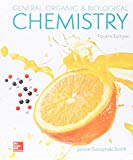
(a)
Interpretation:
The number of valence electrons and the electronic configuration for the valence electrons of neon are to be stated.
Concept introduction:
The elements are placed in periodic table in an increasing order of their
(b)
Interpretation:
The number of valence electrons and the electronic configuration for the valence electrons of rubidium are to be stated.
Concept introduction:
The elements are placed in periodic table in an increasing order of their atomic numbers. The electronic configuration of these elements is the distribution of electrons in different shells, sub shells and orbital of the atom. The electrons in outermost shell are valence electrons, which take part in chemical reaction.
(c)
Interpretation:
The number of valence electrons and the electronic configuration for the valence electrons of aluminum are to be stated.
Concept introduction:
The elements are placed in periodic table in an increasing order of their atomic numbers. The electronic configuration of these elements is the distribution of electrons in different shells, sub shells and orbital of the atom. The electrons in outermost shell are valence electrons, which take part in chemical reaction.
(d)
Interpretation:
The number of valence electrons and the electronic configuration for the valence electrons of manganese are to be stated.
Concept introduction:
The elements are placed in periodic table in an increasing order of their atomic numbers. The electronic configuration of these elements is the distribution of electrons in different shells, sub shells and orbital of the atom. The electrons in outermost shell are valence electrons, which take part in chemical reaction.
(e)
Interpretation:
The number of valence electrons and the electronic configuration for the valence electrons of zirconium are to be stated.
Concept introduction:
The elements are placed in periodic table in an increasing order of their atomic numbers. The electronic configuration of these elements is the distribution of electrons in different shells, sub shells and orbital of the atom. The electrons in outermost shell are valence electrons, which take part in chemical reaction.
Want to see the full answer?
Check out a sample textbook solution
Chapter 2 Solutions
Loose Leaf for General, Organic and Biological Chemistry with Connect 2 Year Access Card
- Write electrons configurations for the following elements. a. The Group VIIA element in the same period as 12Mg b. The Period 2 element in the same group as 50Sn c. The lowest-atomic-numbered nonmetal in Period 3 d. The two Period 2 elements that contain two unpaired electronsarrow_forwardive the electron configurations for the following atoms. Do not use the noble gas notation. Write out the complete electron configuration. trong>ElementElectron configuration __________ emsp; __________ emsp; __________ emsp; __________ __________arrow_forwardHow are the electron arrangements in a given group (vertical column) of the periodic table related? How is this relationship manifested in the properties of the elements in the given group?arrow_forward
- Use electron configurations to explain why (a) sulfur has a lower electron affinity than chlorine. (b) boron has a lower first ionization energy than beryllium. (c) chlorine has a lower first ionization energy than fluorine. (d) oxygen has a lower first ionization energy than nitrogen. (e) iodine has a lower electron affinity than bromine.arrow_forwardWrite electron configurations for the following elements. a. The Group III A element in the same period as 4Be b. The Period 3 element in the same group as 5B c. The lowest-atomic-numbered metal in Group IIA d. The two Period 3 elements that have no unpaired electronsarrow_forward
- Chemistry: Matter and ChangeChemistryISBN:9780078746376Author:Dinah Zike, Laurel Dingrando, Nicholas Hainen, Cheryl WistromPublisher:Glencoe/McGraw-Hill School Pub Co
 World of Chemistry, 3rd editionChemistryISBN:9781133109655Author:Steven S. Zumdahl, Susan L. Zumdahl, Donald J. DeCostePublisher:Brooks / Cole / Cengage Learning
World of Chemistry, 3rd editionChemistryISBN:9781133109655Author:Steven S. Zumdahl, Susan L. Zumdahl, Donald J. DeCostePublisher:Brooks / Cole / Cengage Learning Chemistry for Today: General, Organic, and Bioche...ChemistryISBN:9781305960060Author:Spencer L. Seager, Michael R. Slabaugh, Maren S. HansenPublisher:Cengage Learning
Chemistry for Today: General, Organic, and Bioche...ChemistryISBN:9781305960060Author:Spencer L. Seager, Michael R. Slabaugh, Maren S. HansenPublisher:Cengage Learning  Introductory Chemistry: A FoundationChemistryISBN:9781337399425Author:Steven S. Zumdahl, Donald J. DeCostePublisher:Cengage Learning
Introductory Chemistry: A FoundationChemistryISBN:9781337399425Author:Steven S. Zumdahl, Donald J. DeCostePublisher:Cengage Learning Organic ChemistryChemistryISBN:9781305580350Author:William H. Brown, Brent L. Iverson, Eric Anslyn, Christopher S. FootePublisher:Cengage Learning
Organic ChemistryChemistryISBN:9781305580350Author:William H. Brown, Brent L. Iverson, Eric Anslyn, Christopher S. FootePublisher:Cengage Learning Chemistry: The Molecular ScienceChemistryISBN:9781285199047Author:John W. Moore, Conrad L. StanitskiPublisher:Cengage Learning
Chemistry: The Molecular ScienceChemistryISBN:9781285199047Author:John W. Moore, Conrad L. StanitskiPublisher:Cengage Learning





